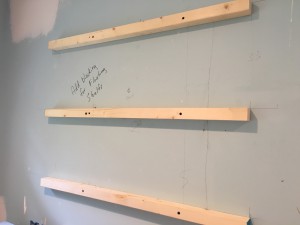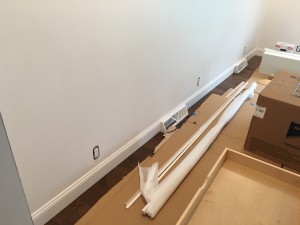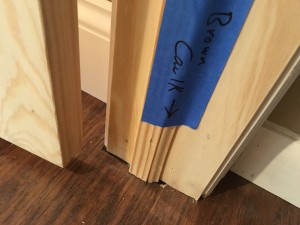“Sometimes I read your stories and I like them, Mom,” said my middle son. “But sometimes, when I read some of your stories, I forget I’m reading. That’s when I know they are really good.”
He’s right. And that’s all thanks to details.
Everyone know the phrase ‘devil is in the details’ but I don’t really like it. It makes details sound like a trick or a scam. Details are super important. And I know that. But sometimes it is so hard to make sure my novel has really good details. Maybe that’s the devil’s fault again, but I think it’s really just mine. It takes a lot of work to check every single detail. But if you love what you do, isn’t it worth it? I think it is, no matter what you’re doing whether it’s writing a novel or building a robot or cooking a meal. The results are worth it.
Details Matter
Here, take a look at these photos from my recent house renovation. These are examples of how our excellent foreman has a keen eye for detail. He takes his time, he does it right, and the results are worth it.
Photo 1 is a close up of the top of some cabinets. The ceiling is sloped just slightly enough that the moulding wouldn’t fit. So the ceiling needed another thin layer of plaster. It took a little more work, but now the moulding will look smooth and clean.
In your story, you want every sentence to read smooth and clean. Where do things slope too far away? Could you add some details to even things out?

Here’s a photo showing the precise markings of some blocking that will support our floating shelves. The shelves will look like they are just floating magically against the wall, like magic. But it’s really careful math and science.
What parts of your story do you want to feel magical but haven’t given them enough support? Are there details you can add so that the entire plot has a good foundation?

Here’s an example of some wall outlets. It’s a bad photo, so just trust me. These wall sockets aren’t aligned. Our foreman didn’t put these in and I know he’d never install wall sockets without lining them up.They were put in decades ago, and they look bad. They disrupt the lines of the wall.
What parts of your story just don’t line up? What details can you add to get things into line?

Here’s a rather amazing example. After laying new floor and installing a new door, our foreman noticed the crew had to chip a tiny hole out of the floor to get the door frame to fit. Our foreman knew right away this hole would bother us every day, since it’s right at the top of the stairs that we use to enter the house. He left a note to himself to fix it.
What tiny plot holes have you left gaping open that you need to close? Is there one detail you can fill in to make the story feel complete to readers?

Details can be added as you hammer out the first draft, but are also a big part of revising.
Details are connected to our senses, so as you’re revising, think about how things look, but also how they sound, smell, feel and taste. One of my favorite details in my manuscript is the sound of cicadas. That sound is part of the Maryland summer soundtrack. I also want to add in the smell of hot tar on a parking lot, and the taste of honeysuckle.
These are all small examples, but details are small. As you read through your favorite books, take note of the details that mattered and how small they are. Then go back through and add them to your story.
